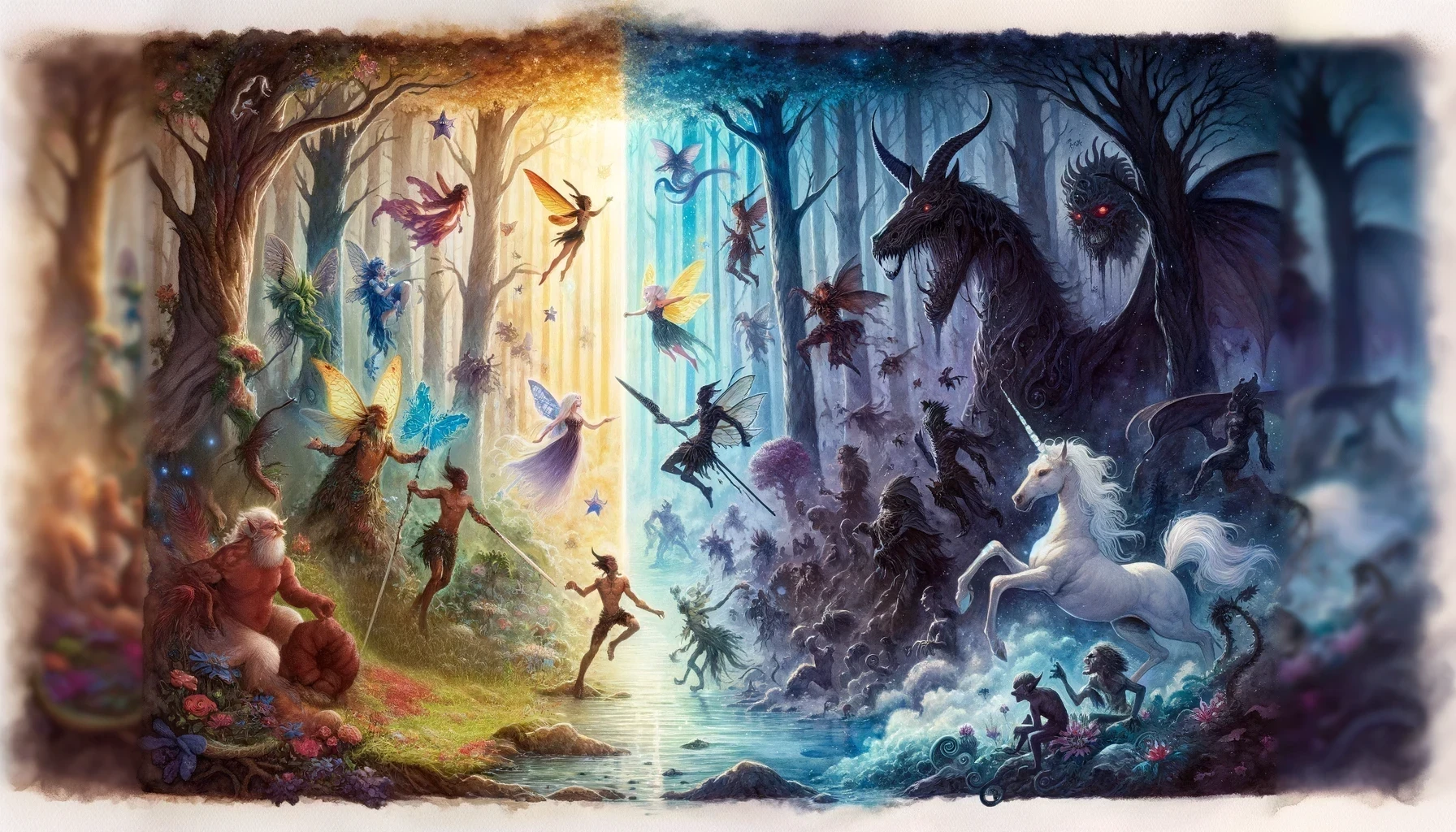top of page

The Clockwork Conspiracy
A busy steampunk cityscape scene



The Clockwork Conspiracy
A busy steampunk cityscape scene
1/4
D&D Loot
Loot
Definition: In Dungeons & Dragons (D&D), loot refers to any items, goods, currency, or other valuables that player characters acquire during their adventures. Loot can be found in a variety of places, such as hidden in dungeons, dropped by defeated enemies, awarded as rewards for completing quests, or gifted by grateful NPCs.
Types: Loot can be broken down into several categories:
-
Gold and Other Currency: The most common type of loot, used to purchase goods and services. In D&D, the standard forms of currency are copper (cp), silver (sp), gold (gp), and platinum (pp).
-
Magic Items: Items imbued with magical properties, ranging from weapons and armor to potions, scrolls, and wondrous items. Magic items often have special abilities or bonuses that can aid characters in and out of combat.
-
Artefacts: Extremely powerful and unique magic items. Artefacts are often central to a campaign's plot and are typically not able to be created by players due to their immense power and complexity.
-
Mundane Items: Common goods that lack magical properties, such as weapons, armour, tools, or trade goods. While not as exciting as magic items or artifacts, mundane items can still be useful or valuable.
-
Gems and Jewellery: Precious stones and ornate jewellery are often found as part of a treasure hoard. They can be sold for currency, used as components for certain spells, or occasionally serve as keys or clues in an adventure.
Acquisition: Characters typically acquire loot through exploration, combat, and interaction.
-
Exploration: Characters can find loot hidden in dungeons, abandoned buildings, or natural environments. Investigation, Perception, and sometimes other skill checks are often used to locate hidden loot.
-
Combat: Defeating enemies can yield loot, either carried by the foes themselves or stashed nearby. The DM typically decides what loot is available based on the creature and the campaign setting.
-
Interaction: Characters may be awarded loot for completing quests, helping NPCs, or as a result of successful social interactions such as Diplomacy or Persuasion.
-
Crafting: Characters with appropriate skills and tools can create certain types of loot, such as weapons, armour, and magic items, given enough time and resources.
Dividing Loot: The distribution of loot among party members is usually decided by the players. It can be split equally, given to the characters who can make the best use of specific items, or divided in some other agreed-upon manner. This process often involves negotiation and role-playing.
DM Considerations: As a DM, it's important to balance the distribution of loot to avoid overpowering or underwhelming the party. Too much loot can make encounters too easy, while too little can lead to frustration. The Dungeon Master's Guide provides tables and guidelines for generating appropriate loot for encounters of different challenge ratings.
Note that campaign settings, adventures, or Dungeon Master rulings may alter or add additional context to these rules. Always consult with your DM for clarification if you're unsure.
Managing Loot Levels in an Adventure: A Guide for Dungeon Masters
As a Dungeon Master (DM) in Dungeons & Dragons, one of your responsibilities is managing the amount and type of loot your adventurers find on their quests. Appropriately balanced loot can be a driving factor in the party's progression, add excitement to the game, and can significantly impact the overall narrative and pacing of the campaign.
1. Understanding Loot Power Levels
The first step in managing loot is understanding the power levels of different types of loot. Mundane items, like simple weapons or tools, can often be generously given without unbalancing the game. In contrast, magic items, particularly ones with powerful abilities or high bonuses, should be distributed more sparingly.
Similarly, currency, gems, and other valuables can significantly impact your campaign if not handled with care. An excess of wealth can make acquiring equipment and services too easy, while too little can lead to frustration. The Dungeon Master's Guide provides detailed tables for appropriate loot distribution according to encounter difficulty, which can serve as a useful starting point.
2. Balancing Challenge and Reward
Balancing the difficulty of encounters with the potential reward is essential. High-risk encounters should offer greater potential rewards. This approach not only makes logical sense - a powerful creature or a heavily guarded vault should have more valuable loot - but also helps motivate players to tackle challenging scenarios. On the other hand, easier or random encounters might yield less significant rewards.
3. Integrating Loot into the Narrative
Loot can play a significant role in your campaign's narrative. A legendary artefact could be the object of a grand quest, while an abundance or scarcity of certain resources could reflect the conditions in your campaign world. Magic items might hold historical significance or be tied to specific characters or factions. Consider the source of the loot, and use it to enrich your campaign's story.
4. Player Expectations and Loot Distribution
Player expectations are another crucial factor in loot management. Some players may be excited about acquiring vast wealth or powerful magic items, while others may be more interested in unique or story-driven loot. It's important to communicate with your players and understand their expectations.
When it comes to loot distribution among the party, remember that this can be a great opportunity for role-playing. Some groups might simply divide everything equally, while others might engage in character-driven discussions about who gets what. As a DM, you should encourage these interactions, but be prepared to step in if disagreements threaten the group's fun.
5. Encouraging Creativity with Loot
Lastly, don't forget that loot can be more than just swords and gold. Unique, seemingly mundane items can spur player creativity and lead to memorable moments. A mysterious key, a map with a section missing, or a diary written in a foreign language can all become fascinating loot if they are linked to the wider world and its mysteries.
In summary, managing loot in your D&D campaign is a balance of power, challenge, narrative, player expectations, and creativity. It's an art rather than a strict science, and each group and campaign might require different approaches. However, with careful consideration, appropriate loot management can greatly enhance the excitement, narrative depth, and player satisfaction in your games.
bottom of page




